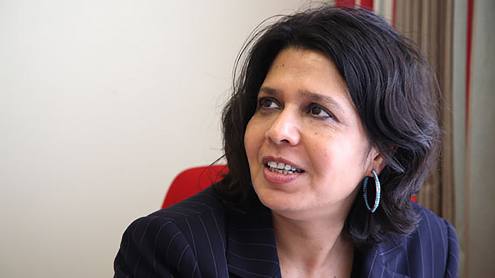Back in 2004, I asked a group of bankers when mobile would take off in banking. They all said: "Not in our lifetimes."
In 2007, Bank of America launched its mobile banking applications and has seen a rapid uptake of users. In less than a year, it reached 1 million customers on mobile, and saw a further 300% growth in 2008. It took the bank more than a year to get the first million customers; a pregnancy period of just nine months to get the second million; and a short six months to get the third.
According to Doug Brown, the man responsible for mobile banking at Bank of America, the speed of take-up accelerated even faster in 2009, with 150,000 new mobile customers in September 2009, 210,000 in August and 220,000 in July.
So what are they doing? Ninety-nine per cent of mobile users view balances, 90% view transaction details and about $10bn-worth of funds have been moved via mobile transactions.
But this is not just for existing account holders wanting account access. The bank has gained more than 150,000 new account holders from competitors during 2009, just because they wanted mobile banking.
So far so good.
Now jump to Africa
M-PESA is the story in Africa. M-PESA is the mobile text service introduced by Vodafone's subsidiary, Safaricom, back in 2007. Suddenly Kenya, which had zero electronic methods for making payments for the masses, had an electronic access which has revolutionised the country.
Within a year, one in five Safaricom users were using M-PESA to make payments, and one in 10 Kenyans had used the service. By November 2009, M-PESA had become the world's biggest mobile money service with more than 10% of Kenya's gross domestic product moved by mobile payments. Accidentally, Safaricom has become the biggest bank in Kenya, with 8 million users registered and more than $2bn transferred by mobile.
Now M-PESA is being expanded into Nigeria, South Africa and other African countries, while banks say that customers are actually switching banks to get mobile channel access.
Now jump to Japan
Jibun Bank launched in Japan in June 2008. Don't try to use the bank online or through a branch. This is a multimedia-rich, mobile-only bank.
The bank is a joint venture between the Bank of Tokyo-Mitsubishi UFJ and telecoms operator KDDI.
Jibun Bank, which means 'my bank', gained 500,000 account openings in just eight months and, after 18 months, had Y140bn ($1.5bn) of deposits by December 2009, from more than 850,000 accounts.
At the start of March 2010, the bank opened its millionth account.
What is the point of these three case studies?
Well, there are many, many examples of banks innovating with mobile worldwide today, but the lesson is this.
In 2004, bankers believed this revolution would not take place in their lifetime.
One banker actually said to me, in writing: "I think this idea is way out there - 10 to 20 years - before this plays out in any sizeable way."
Six years later, the battleground is already defined and being won.
Are you fighting in this space?
Have you lost already?
I wonder...
Chris Skinner is an independent financial commentator and chairman of London-based The Financial Services Club (www.thefinanser.com)







